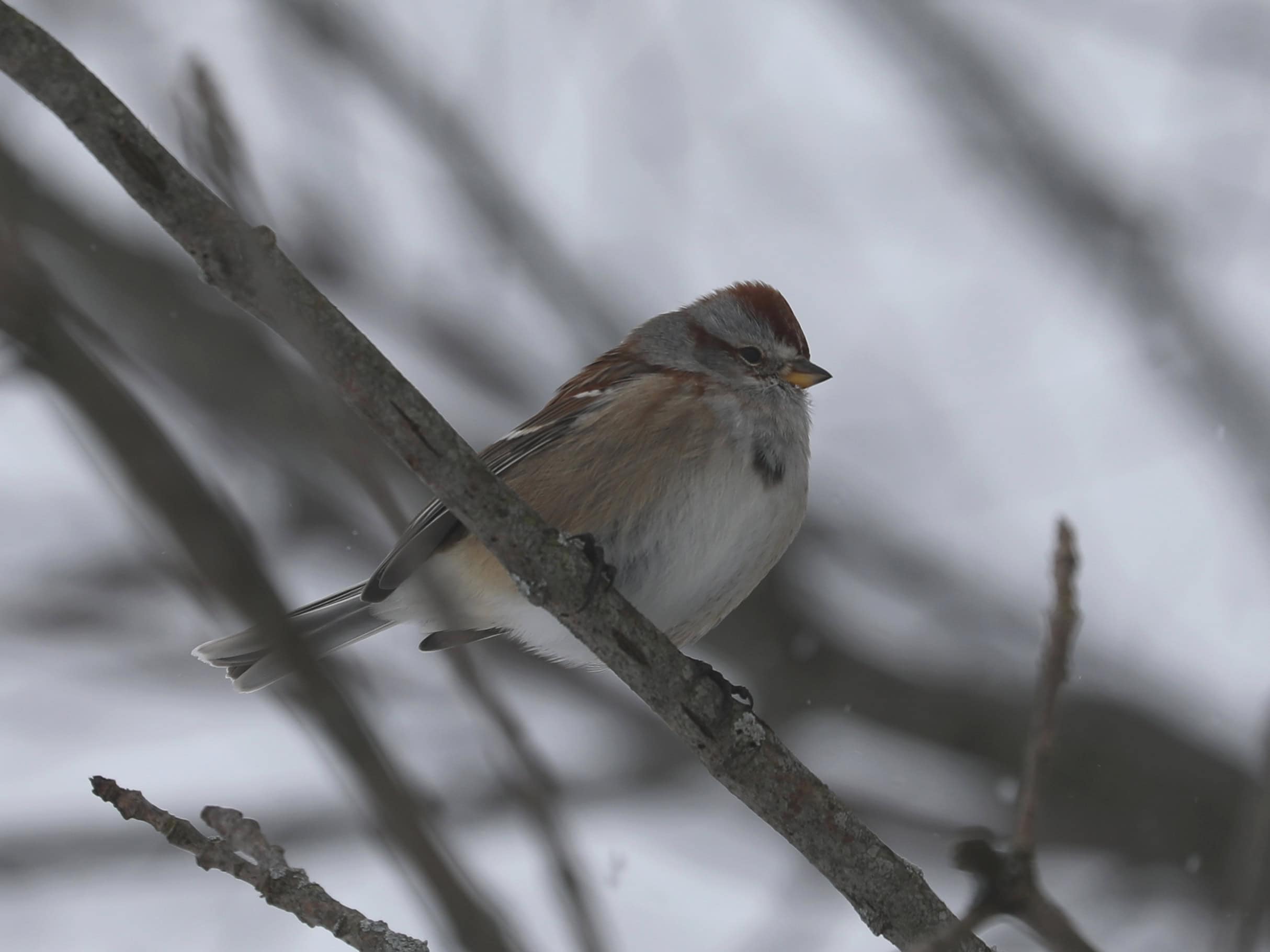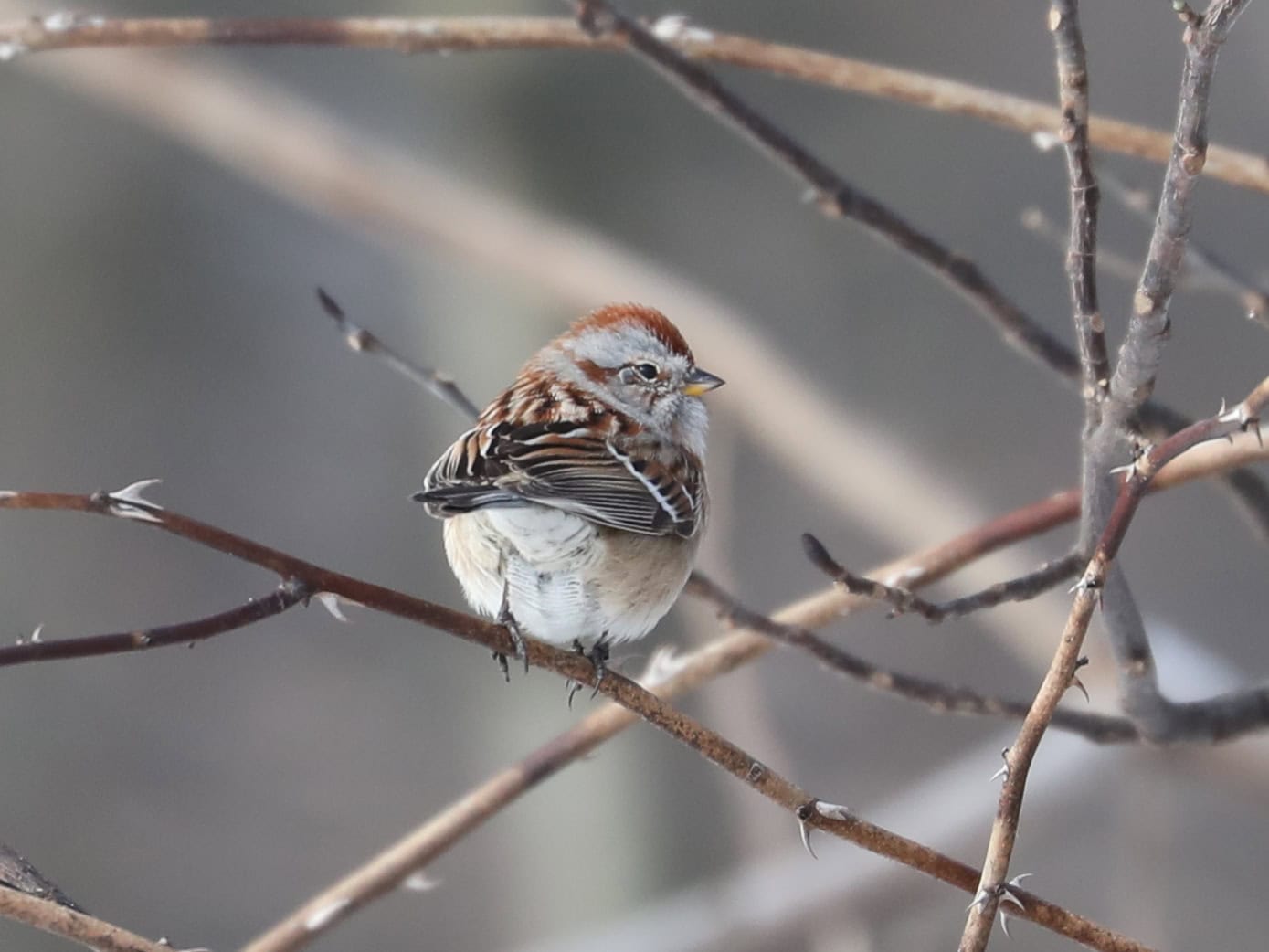American Tree Sparrow
Winter is the best time of year to see American Tree Sparrows in Pennsylvania. I came across a flock of over 60 last week in some weedy fields north of Pittsburgh. You can find this species in the Susquehanna Valley, but they’re more common in the northern half of Pennsylvania. I’ve seen them in my yard, but not often. In more than twelve years keeping close track of my yard birds, I’ve seen three American Tree Sparrows, one each in March 2014, March 2015, and February 2021. If one visits your yard, you’ll likely see it on the ground searching for millet with other sparrows like White-throated Sparrows and Dark-eyed Juncos.
American Tree Sparrows are not well named. They nest in Canada and Alaska, so far north that trees can’t grow. Although they occasionally perch in trees or shrubs during the winter, they spend the majority of their time in open field habitat. The American Tree Sparrow got its name because it superficially resembles the Eurasian Tree Sparrow (a close relative of the House Sparrow), which nests in trees.
Although American Tree Sparrows are abundant, their population has declined by more than 50% since the 1970s. The reasons for the population decline are not known for sure, but a strong hypothesis is that their habitat has changed. In parts of their winter range, they have less of the weedy field habitat they rely on, either due to changing agricultural practices or the growth of forests. Less is known about the breeding season, because very few people live that far north. However, Arctic regions are disproportionately affected by global climate change, so American Tree Sparrows may be struggling there as well.
American Tree Sparrow
Winter is the best time of year to see American Tree Sparrows in Pennsylvania. I came across a flock of over 60 last week in some weedy fields north of Pittsburgh. You can find this species in the Susquehanna Valley, but they’re more common in the northern half of Pennsylvania. I’ve seen them in my yard, but not often. In more than twelve years keeping close track of my yard birds, I’ve seen three American Tree Sparrows, one each in March 2014, March 2015, and February 2021. If one visits your yard, you’ll likely see it on the ground searching for millet with other sparrows like White-throated Sparrows and Dark-eyed Juncos.
American Tree Sparrows are not well named. They nest in Canada and Alaska, so far north that trees can’t grow. Although they occasionally perch in trees or shrubs during the winter, they spend the majority of their time in open field habitat. The American Tree Sparrow got its name because it superficially resembles the Eurasian Tree Sparrow (a close relative of the House Sparrow), which nests in trees.
Although American Tree Sparrows are abundant, their population has declined by more than 50% since the 1970s. The reasons for the population decline are not known for sure, but a strong hypothesis is that their habitat has changed. In parts of their winter range, they have less of the weedy field habitat they rely on, either due to changing agricultural practices or the growth of forests. Less is known about the breeding season, because very few people live that far north. However, Arctic regions are disproportionately affected by global climate change, so American Tree Sparrows may be struggling there as well.
About The Author
Dan Hinnebusch is the Ornithologist for Wild Birds Unlimited. Click to learn more.





